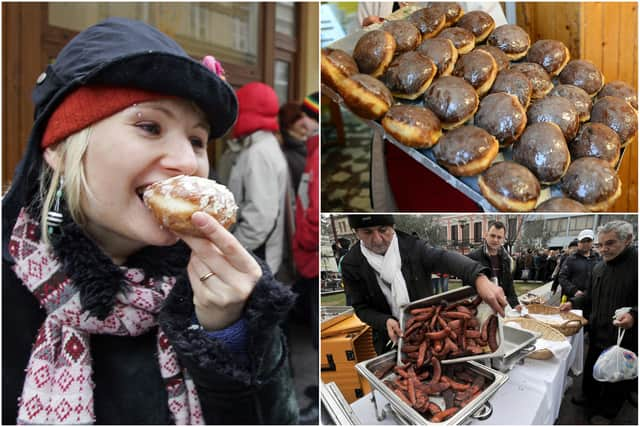Fat Thursday 2024: what is Tlusty Czwartek, Poland origins - Paczki donut and Polish faworki meaning
and live on Freeview channel 276
It may be grey/rainy/snowing outside (delete as appropriate), but here comes a little known celebration to lift your spirits - Fat Thursday.
Known as "Tłusty Czwartek" in its native Polish, Fat Thursday is a traditional celebration observed on the last Thursday before Lent, which just so happens to be today (8 February).
Advertisement
Hide AdAdvertisement
Hide AdIts observance has slowly been spreading in the UK in recent years, thanks in part to increased cultural diversity and a growing interest in exploring and embracing different traditions.
And when you see how it is celebrated, it's not exactly hard to see why it might catch on... Here is everything you need to know about it.
What is Fat Thursday?


Fat Thursday has its roots in the Catholic tradition, and is marked by indulging in rich, fatty foods before the onset of Lent, traditionally a time for giving up indulgences or vices like chocolate and alcohol for a 40 day period.
Fat Thursday, therefore, serves as a prelude to Lent by allowing people to partake in one final day of feasting (though of course, we've still got Pancake Day to come) and enjoyment.
Advertisement
Hide AdAdvertisement
Hide AdOne of the hallmark features of Fat Thursday is the consumption of indulgent, calorie-laden foods, particularly pastries. In Poland - where Fat Thursday is perhaps most widely celebrated - Paczki, a type of doughnut filled with sweet fillings such as jam or custard, are a popular treat.
Bakeries and households alike prepare and share these pastries, symbolising a collective indulgence in the richness of life before the more sombre season of Lent begins.
In addition to pastries, traditional Polish dishes like faworki (angel wings) and krofne (doughnuts) are also enjoyed on Fat Thursday.
The variety of culinary indulgences varies across cultures, but the central theme remains the same – a last celebration of excess before the austerity of Lent.
Advertisement
Hide AdAdvertisement
Hide AdIn an era where dietary restrictions are often emphasised, Fat Thursday provides a welcome opportunity for people to momentarily cast aside concerns about calories and nutritional content.
The trend of sharing images of elaborate feasts on social media platforms further contributes to the celebration's visibility and appeal.
In countries where the tradition is more widely celebrated, there has been a noticeable shift in the way Fat Thursday is celebrated, with some arguing that the tradition has been exploited by marketing companies.
The commercialisation of a once-purely religious observance has led to an increased focus on the sale and promotion of indulgent foods, often overshadowing the original significance of the day.
Advertisement
Hide AdAdvertisement
Hide AdBakeries, supermarkets and restaurants now seize the opportunity to market special deals and limited-edition products, capitalising on the public's desire for culinary extravagance.
But there's no denying that people everywhere will be drawn to the idea of participating in a celebration of indulgence, irrespective of religious affiliations.
When is Fat Thursday?
Fat Thursday is always observed on the last Thursday before Lent. In 2024, that falls on Thursday 8 February.
Comment Guidelines
National World encourages reader discussion on our stories. User feedback, insights and back-and-forth exchanges add a rich layer of context to reporting. Please review our Community Guidelines before commenting.
